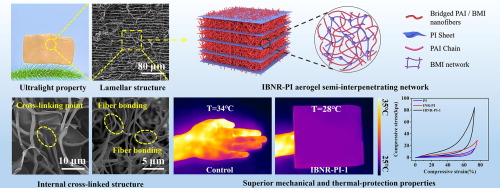
A revolutionary breakthrough in materials science has been achieved with the development of a chemically varied library of aerogels. These newly synthesized aerogels demonstrate remarkable stability under extreme thermal and mechanical conditions, thanks to their specially crafted dome-shaped structural design. Researchers are hopeful that this innovation will lead to the creation of advanced aerogel materials suitable for harsh environments.
Aerogels are famous for their highly porous nature, leading to materials with exceptionally low densities and thermal conductivities. These attributes make them highly desirable in sectors such as aerospace and energy. Conventional aerogel synthesis involves the extraction of a solvent from a gel—a polymer network in solution—but this often results in brittle and inflexible aerogels due to irregular pore shapes. Chao Gao, who is spearheading the research at Zhejiang University, China, points out that previous techniques are expensive and energy-consuming, hindering large-scale industrial production. While some modern aerogels have utilized geometric configurations like honeycombs to enhance stability, they still fall short under severe conditions.
The innovative technique introduced by Gao’s group, called 2D channel-confined chemistry, facilitates the production of highly elastic and stable aerogels, marked by uniform dome-shaped pores. This method involves soaking graphene oxide film layers in salt solutions to trap ions within the network. A foaming agent incorporates bubbles into this hybrid material, ultimately resulting in aerogel formation after heating.
By employing this technique, the researchers developed 194 varieties of metallic, oxide, and carbide aerogels. These materials exhibited low densities, with some types—known as extra light aerogels—having densities lighter than air. Such flexibility in synthesis, demonstrated through large-scale plates and continuous rolls, indicates that these aerogels could meet industry demands in the future.
Mechanical evaluations showed that these aerogels could endure repeated compression of up to 99% strain over 20,000 cycles while retaining structural integrity—highlighting their superelasticity. Gao attributes this extraordinary stability to the dome-shaped pores, comparing their strength to the architectural durability seen in domed structures, such as cathedrals.
For potential applications, Xi Shen from Hong Kong Polytechnic University recommends investigating other types of mechanical loading, including stretching, bending, or twisting, to thoroughly evaluate their mechanical attributes. Among the produced aerogels, carbide derivatives exhibited superelastic and insulating properties over a wide temperature range, from cryogenic 4K to extreme 2273K. This was impressively illustrated when a rose was protected from a butane flame for 5 minutes using merely an 8mm thick carbide aerogel, with no damage incurred.
These advancements point to promising potential applications in deep space technology, tackling challenges of temperature shifts caused by solar energy variation. However, according to Shen, substantial development is still necessary before these applications can be fully actualized.